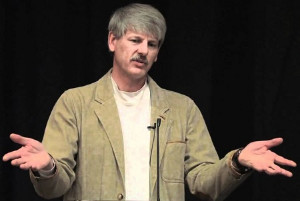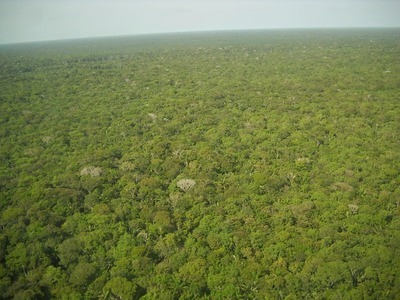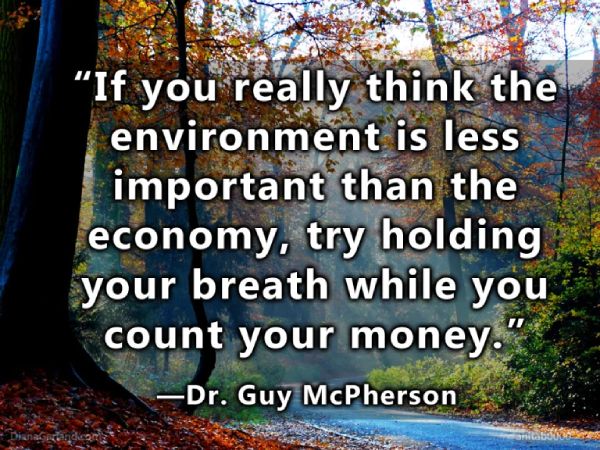Image: Brazilian equatorial forest, Rosa Maria, Pixabay
This document briefly investigates the idea of planting trees to sequester atmospheric carbon. Obviously, the process of photosynthesis insures that trees sequester carbon from the atmosphere. However, there are important questions that arise as we consider whether, how, and how many trees to plant. How fast do trees sequester carbon from the atmosphere? How much carbon do trees sequester? What negative side-effects are associated with planting large numbers of trees?
These are the questions I will attempt to answer in this document. I prepared the following report upon request from an organization interested in slowing or stopping the ongoing overheating of Earth by planting trees. Thus the formatting, atypical for this space.
Life isn’t finding shelter in the storm. It’s about learning to dance in the rain. ~ Sherrilyn Kenyon
Only by immediately halting all deforestation can we convert forests from a global carbon source into a carbon sink. The assumption that we will immediately halt all deforestation runs contrary to recent societal conduct and global trends. As of July, 2019, the Amazon basin alone was being deforested at the rate of 1 hectare per minute (Shukman 2019).
Evidentiary Overview
There is a nearly perfect match between an organism and its environment. The environment is comprised of everything that influences the life of an organism, including sunlight, climate, geology, and surrounding organisms. As a result of this close correspondence between an organism and its environment, minor environmental changes can produce profound changes in organisms, including loss of habitat for some species. In other words, the organism – any organism – depends upon a wide variety of factors for its continued persistence in a specific location (and therefore, on Earth). Loss of a seemingly minor species can therefore cascade into loss of habitat for a large number of species, thereby leading to co-extinctions.
Strona and Bradshaw (2018) described how co-extinctions result from a change in environmental conditions. In their case, they described how a 5 C or 6 C global-average rise in temperature will result in a loss of all life on Earth. We are clearly headed for that degree of temperature change within the coming few years, as I have described repeatedly at Nature Bats Last (McPherson 2020).
An article from the peer-reviewed journal Landscape and Urban Planning examined efforts to quantify the sequestration capacity of urban flora (Velasco et al. 2016). It was titled, “Does urban vegetation enhance carbon sequestration?” For example, a Vancouver neighborhood sequestered about 1.7 percent as much carbon as human activities produced, while in Mexico City the figure was 1.4 percent. The results were worse in Singapore. Overall, the authors concluded, “The impact of urban vegetation to reduce greenhouse gas emissions directly through carbon sequestration is very limited or null.”
In other words, planting trees in urban areas is not a viable means by which to sequester carbon. What about planting trees in non-urban areas? This question is addressed in a study published in the prestigious peer-reviewed journal Nature on 2 April 2019 (Lewis et al. 2019).
As pointed out by Lewis et al. (2019), the most effective place to plant trees with respect to climate change is in the tropics and subtropics. Most forest-restoration commitments are found in these areas. In addition, trees sequester carbon relatively quickly near the equator, and land is inexpensive and available compared to temperate regions. In addition, establishing forests near the equator has little effect on the albedo (reflectivity) of the land surface, in contrast to high latitudes where trees obscure snow that would otherwise reflect incoming sunlight and therefore help keep the planet cool. Well-managed forests in the tropics and subtropics also can help alleviate poverty in low-income regions, conserve biological diversity, and support the United Nations Sustainable Development Goals.
According to Lewis et al. (2019), the Intergovernmental Panel on Climate Change (IPCC) suggests in its October, 2018 report that atmospheric carbon sequestration by 2100 must total about 730 billion tonnes of CO2 (730 petagrams of CO2, or 199 petagrams of carbon, Pg C).In the near term, this means addingup to 24 million hectares (Mha) of forest every year between now and 2030. These 24 Mha of forest would be comprised of plantations. This is equivalent to all the CO2 emitted by the United States, the United Kingdom, Germany, and China since the Industrial Revolution began in 1750. There is no known means to capture so much CO2.
Fast-growing trees within plantations, such as Eucalyptus and Acacia, sequester up to 5 tonnes of carbon per hectare per year. After such trees are harvested and the land is cleared for replanting — typically once per decade — the carbon is released into the atmosphere through decomposition. In other words, planting trees into plantations is a temporarymeasure. Worse yet, according to an analysis conducted by Bala and colleagues and published in the Proceedings of the National Academy of Scienceson 17 April 2007, “afforestation projects … would be counterproductive if implemented at high latitudes and would offer only marginal benefits in temperate regions.”
Recognizing the inability of tropical and subtropical plantations to rise to the challenge posed by IPCC goals, Lewis et al. (2019) call on the “restoration community, forestry experts, and policymakers to prioritize the regeneration of natural forests over other types of tree planting — by allowing disturbed lands to recover to their previous high-carbon state.” They go on to write that this task “will entail tightening definitions, transparently reporting plans and outcomes and clearly stating the trade-offs between different uses of land.” They conclude that restoration of extant forests, along with reforestation of deforested areas, is the most effective strategy for storing carbon.
Carbon-storage potential is currently being sabotaged by clashing global priorities. The best-case scenario offered by Lewis et al. (2019) has the entire area available to management regenerating to natural forest. However, even under this unlikely scenario, only 42 Pg of carbon would be stored in tropical and subtropical ecosystems by 2100 (vs. the stated goal of 199 Pg).
Other Considerations
In addition to technical obstacles directly related to the task of planting trillions of trees, other issues must be considered. For example, the economic cost of managing forests must be paid. By whom? Under what set of contracts? Who would derive financial benefits under these contracts? In addition to these financial concerns, at least three additional issues must be addressed: ongoing overheating of Earth, the aerosol masking effect, and the environmental consequences of water uptake by trees.
According to an overview published by European Strategy and Policy Analysis System in April 2019 (Gaub et al. 2019), an “increase of 1.5 degrees is the maximum the planet can tolerate; … at worst, [such a rise in temperature above the 1750 baseline will cause] the extinction of humankind altogether.” In other words, according to this major synthesis, we have passed the point beyond which human extinction is likely to occur. After all, Earth is currently at least 1.73 C above the 1750 baseline (Carana 2018).
The aerosol masking effect, sometimes called global dimming, refers to the cooling effect associated with industrial activity. The aerosols produced by industrial activity are temporarily suspended in Earth’s atmosphere, thus serving to cool Earth. These aerosols constantly fall to the surface of Earth, and without sustained industrial activity their impact is lost within a matter of a few weeks. As a result, slowing or stopping civilization serves to heat Earth even faster than the ongoing warming resulting from this set of living arrangements. The impact of the aerosol masking effect has been greatly underestimated, as pointed out in an 8 February 2019 article in Science(Rosenfeld et al. 2019). As indicated by the lead author of this paper on 25 January 2019 (The Hebrew University of Jerusalem 2019): “Global efforts to improve air quality by developing cleaner fuels and burning less coal could end up harming our planet by reducing the number of aerosols in the atmosphere, and by doing so, diminishing aerosols’ cooling ability to offset global warming.” The cooling effect is “nearly twice what scientists previously thought” (Fagan 2019). This paper cites the conclusion by Levy et al. (2013) indicating as little as 35% reduction in industrial activity drives a 1 C global-average rise in temperature, which suggests that as little as a 20% reduction in industrial activity is sufficient to warm the planet 1 C within a few days or weeks. This Catch-22 of abrupt climate change takes us down the wrong path regardless of the direction of industrial activity, assuming we are interested in maintaining habitat for vertebrates and mammals on Earth. A decline in the aerosol masking effect means loss of habitat for human animals, with human extinction soon to follow. Such an event will solve all our problems, albeit in a manner that eliminates most or all life on Earth (McPherson 2019).
Finally, planting trees reduces surface water. Several peer-reviewed studies have linked increased forest cover with reduced river flow and potentially detrimental effects downstream (Bentley and Coomes 2020). A peer-reviewed meta-analysis of 43 published studies published in the peer-reviewed journal Global Change Biologyby Bentley and Coomes (2020) found that forests reduced annual river flow by 23% after 5 years and 38% after 25 years. These adverse effects persisted for five decades after forests became established.
Conclusion
I am not proposing “giving up,” whatever that means in the midst of a Mass Extinction Event and abrupt, irreversible climate change. Rather, my ongoing scholarly efforts are focused on minimizing suffering. How do we minimize suffering? Is such a quest restricted to humans, or are other organisms included? What is the temporal frame of the quest? Does it extend beyond the moment, perhaps to months or years? Does it extend beyond the personal to include other individuals? These are the questions on which I have chosen to focus.
Perhaps others will join me in my quest to understand suffering and its causes. Perhaps doing so will alleviate further suffering. I can imagine worse pursuits.
Literature Cited
Bala, G., K. Caldeira, M. Wickett, T.J. Phillips, D.B. Lobell, C. Delire, and A. Mirin, 2007, Combined climate and carbon-cycle effects of large-scale deforestation, Proceedings of the National Academy of Sciences104:6550-6555, pnas.org/content/104/16/6550
Bentley, L.B. and D.A. Coomes, 2020, Partial river flow recovery with forest age is rare in the decades following establishment, Global Change Biology, doi.org/10.1111/gcb.14954
Carana, S., 2018, How much warmer is it now? Arctic News, 2 April 2018,arctic-news.blogspot.com/2018/04/how-much-warmer-is-it-now.html
Intergovernmental Panel on Climate Change, 2018, Global Warming of 1.5 ºC, ipcc.ch/sr15/
Fagan, L. 2019, Cooling from atmospheric particles may mask greater warming, Sustainability Times, 25 January 2019, https://www.sustainability-times.com/environmental-protection/research-cooling-from-atmospheric-particles-may-mask-greater-warming/
Gaub, L. et al., 2019, Global Trends to 2030: Challenges and Choices for Europe, European Strategy and Policy Analysis System, April 2019,espas.secure.europarl.europa.eu/orbis/sites/default/files/generated/document/en/ESPAS_Report2019.pdf
The Hebrew University of Jerusalem, 2019, We need to rethink everything we know about global warming: New calculations show scientists have grossly underestimated the effects of air pollution, ScienceDaily22 January 2019, sciencedaily.com/releases/2019/01/190122104611.htm
Levy II, L.W. Horowitz, M.D. Schwarzkopf, Y. Ming, and J.-C. Golaz 2013, The roles of aerosol direct and indirect effects on past and future climate change,JGR: Atmospheres118:4521-4532, https://agupubs.onlinelibrary.wiley.com/doi/full/10.1002/jgrd.50192
Lewis, S.L., C.E. Wheeler, E.T.A. Mitchard, and A. Kock 2019, Restoring natural forests is the best way to remove atmospheric carbon. Nature568: 25–28, nature.com/articles/d41586-019-01026-8
McPherson, G.R. 2019, Becoming hope-free: Parallels between death of individuals and extinction of Homo sapiens. Clinical Psychology Forum317:8-11.
McPherson, G.R. 2020, Nature Bats Last, guymcpherson.com
Rosenfeld, D., Y. Zhu, M. Want, Y. Zheng, T. Goren, and S. Yu 2019, Aerosol-driven droplet concentrations dominate coverage and water of oceanic low-level clouds. Science363(6427) doi.org/10.1126/science/aav0566
Shukman, D. 2019, ‘Football pitch’ of Amazon forest lost every minute. BBC News2 July 2019, bbc.com/news/science-environment-48827490
Strona and Bradshaw 2018, Scientific Reports8, Article 16724, doi.org/10.1038/s41598-018-35068-1
Velasco, E., M. Roth, L. Norford, and L.T. Molina. 2016. Does urban vegetation enhance carbon sequestration? Landscape and Urban Planning148:99-107, doi.org/10.1016/j.landurbplan.2015.12.003
Author
 Dr. Guy McPherson is an internationally recognized speaker, award-winning scientist, and the world’s leading authority on abrupt climate change leading to near-term human extinction. He is professor emeritus at the University of Arizona. His published works include more than a dozen books and hundreds of scholarly articles. Dr. McPherson has been featured on television and radio and in several documentary films. He is a blogger, cultural critic, and co-host of his own radio show “Nature Bats Last.” Dr. McPherson speaks to general audiences around the globe, and to scientists, students, educators, and not-for-profit and business leaders who seek their best available options when confronting Earth’s cataclysmic changes. Published February, 2019: McPherson, Guy R. 2019. Only Love Remains: Dancing at the Edge of Extinction. Woodthrush Productions, New York.
Dr. Guy McPherson is an internationally recognized speaker, award-winning scientist, and the world’s leading authority on abrupt climate change leading to near-term human extinction. He is professor emeritus at the University of Arizona. His published works include more than a dozen books and hundreds of scholarly articles. Dr. McPherson has been featured on television and radio and in several documentary films. He is a blogger, cultural critic, and co-host of his own radio show “Nature Bats Last.” Dr. McPherson speaks to general audiences around the globe, and to scientists, students, educators, and not-for-profit and business leaders who seek their best available options when confronting Earth’s cataclysmic changes. Published February, 2019: McPherson, Guy R. 2019. Only Love Remains: Dancing at the Edge of Extinction. Woodthrush Productions, New York.









